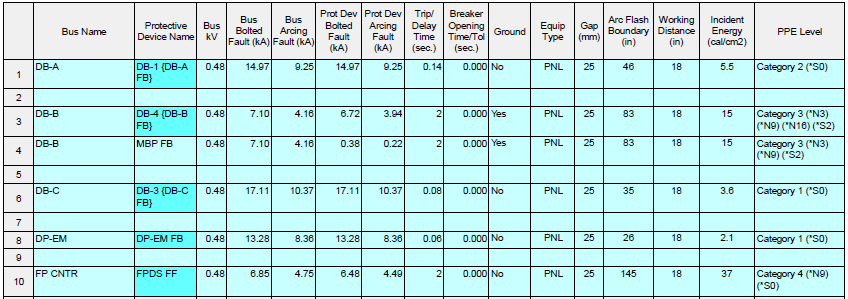
Short Circuit and Arc Flash Calculators Free Excel Sheet
Short circuits and arc flashes can be hazardous electrical events, potentially causing equipment damage, injuries, and even fatalities. To ensure the safety of workers and the reliability of electrical systems, engineers and electricians rely on specialized tools and calculations. In this blog post, we will explore the significance of short circuit and arc flash calculators, their applications, and how they play a crucial role in electrical safety and system design.

The Importance of Short Circuit and Arc Flash Calculators
- Enhanced Safety: Short circuits and arc flashes are among the most common electrical hazards. By using specialized calculators, professionals can assess the potential risks and take necessary precautions to prevent accidents and injuries.
- Equipment Protection: Electrical equipment is expensive and essential to many industrial processes. Short circuit calculations help in selecting the right protective devices, reducing the likelihood of equipment damage.
- Compliance with Standards: Various safety standards, such as NFPA 70E and IEEE 1584, require electrical systems to be evaluated for short circuit and arc flash hazards. Calculations help ensure compliance with these regulations.
Short Circuit Calculators
A short circuit occurs when an electrical current flows along an unintended path due to a fault. Short circuit calculators determine the following key parameters:
- Fault Current: These tools help engineers determine the maximum current that can flow during a short circuit event, allowing them to size protective devices accordingly.
- Voltage Drop: Calculators can estimate the voltage drop during a short circuit, ensuring that the rest of the system remains operational.
- Protective Device Coordination: Short circuit calculations are essential for coordinating protective devices, preventing nuisance trips, and minimizing downtime.
Arc Flash Calculators
An arc flash is a sudden release of energy that occurs during a fault in an electrical system. Arc flash calculators are vital for assessing and mitigating these risks:
- Incident Energy: Arc flash calculators determine the incident energy at a specific location, helping workers select appropriate personal protective equipment (PPE).
- Safe Working Distance: They also provide information about the safe working distance to protect workers from the intense heat and radiation generated during an arc flash.
- Boundary Zones: Arc flash calculators establish flash protection boundaries, ensuring that only qualified personnel enter these areas.
How to Use Short Circuit and Arc Flash Calculators
Professionals in the electrical industry must follow these steps when using short circuit and arc flash calculators:
- Gather System Data: Collect data about the electrical system, including voltage levels, fault currents, and cable lengths.
- Input Data: Enter the collected data into the calculator’s interface, ensuring accuracy.
- Interpret Results: Review the results to determine protective device settings, PPE requirements, and other safety measures.
- Implement Safety Measures: Based on the calculations, implement the necessary safety measures, such as selecting the right protective devices, installing barriers, and providing appropriate PPE.
Conclusion
Short circuit and arc flash calculators are indispensable tools for ensuring electrical safety, protecting equipment, and complying with industry standards. Electrical professionals must incorporate these calculations into their routine procedures to minimize risks and maintain a safe working environment. By understanding their significance and following best practices, we can prevent accidents, save lives, and ensure the reliability of electrical systems.


Usually I do not read article on blogs however I would like to say that this writeup very compelled me to take a look at and do it Your writing style has been amazed me Thank you very nice article